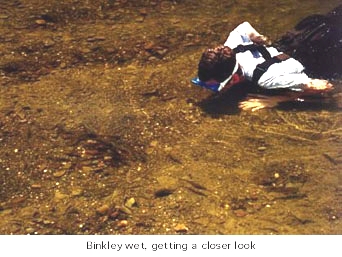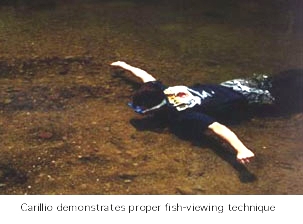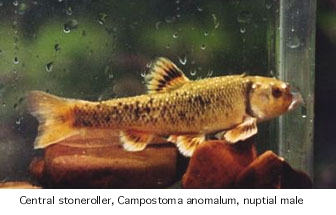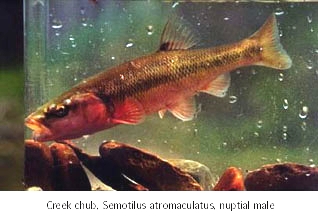Page 4
 It wasn't
long before we called for the one diving-mask-sans-snorkel that
we had, and the real fish nuts showed their true stripes by first
trying to just put their heads under, and finally lying right
down in the water to get a better look. Our dedication to the
endeavor was further proven by the fact that this was done while
holding our breath due to the lack of snorkel. Once you get all
the way into the water, waders are pretty well defeated, so they
were jettisoned in favor of full contact with the rather comfortable
water.
It wasn't
long before we called for the one diving-mask-sans-snorkel that
we had, and the real fish nuts showed their true stripes by first
trying to just put their heads under, and finally lying right
down in the water to get a better look. Our dedication to the
endeavor was further proven by the fact that this was done while
holding our breath due to the lack of snorkel. Once you get all
the way into the water, waders are pretty well defeated, so they
were jettisoned in favor of full contact with the rather comfortable
water.
We were intrigued with this spawning phenomenon
when carefully viewing it from below the surface of the water
through the diving mask. This presents a whole different perspective
on these animals. Who says you have to travel thousands of miles
away to witness nature's beauty?! On the contrary, in this crowded
portion of the state, these fish are still doing what they have
been doing for generation after generation in spite of how technologically
dependent the world has become! Well, that is just what I thought
after seeing this! It was some kind of experience, for at least
a few minutes, to be a guest in their home. Though completely
enthralled, I finally had to come up for air. Next time we'll
remember the snorkel!
As we seined the entire pool with one sweep,
the catch was bountiful as the net, when pulled to the surface,
was shimmering with colorful breeding central stonerollers and
common shiners all of which were very large in size. The male
stonerollers were festooned with black, gold and orange and felt
like sandpaper, their bodies covered with nuptial tubercles. The
common shiners were anything but common, with crimson fins and
pink and red across their flanks. As we watched the fishes on
their nests, we also observed male and female rainbow darters
apparently spawning right along side the minnows in the clean
gravel substrate. Nearby the several pit nests, we also captured
giant creek chubs with salmon pink sides and stout horns (tubercles)
along their heads. With the creek chubs, in deeper water, we also
found white suckers with tubercles on their anal and caudal fins
and a wide blackish band running along their sides. The riprap
rocks on the opposite bank yielded bluntnose minnows, male and
female. The males were in their full dress black, apparently guarding
and enticing mates into their nests. It was a treat to find these
fishes in such clear water where they could be observed from above
and below the surface, and we were fortunate enough to capture
on film several catches of the day.


 It wasn't
long before we called for the one diving-mask-sans-snorkel that
we had, and the real fish nuts showed their true stripes by first
trying to just put their heads under, and finally lying right
down in the water to get a better look. Our dedication to the
endeavor was further proven by the fact that this was done while
holding our breath due to the lack of snorkel. Once you get all
the way into the water, waders are pretty well defeated, so they
were jettisoned in favor of full contact with the rather comfortable
water.
It wasn't
long before we called for the one diving-mask-sans-snorkel that
we had, and the real fish nuts showed their true stripes by first
trying to just put their heads under, and finally lying right
down in the water to get a better look. Our dedication to the
endeavor was further proven by the fact that this was done while
holding our breath due to the lack of snorkel. Once you get all
the way into the water, waders are pretty well defeated, so they
were jettisoned in favor of full contact with the rather comfortable
water.

